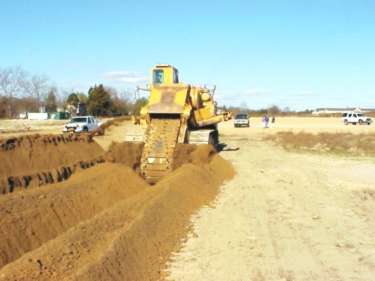|
I. Introduction (cont.)
Direct BillingNJDEP also recovers its oversight costs when a responsible party conducts and pays for a cleanup with Site Remediation Program approval. Similarly, when a party undertakes a voluntary cleanup, often as part of a redevelopment project, and seeks the Site Remediation Program's input, the costs to the program are recovered. Here, the benefits derived from the Department's guidance and approval by developers, banks and other parties not considered responsible for a site's contamination also are calculated and recouped. The Site Remediation Program's semiannual billing system to recover its oversight costs from private parties conducting remedial activities achieved new efficiencies in State Fiscal Year 1999. The number of bills issued in State Fiscal Year 1999 increased to 8,219 from 4,791 in State Fiscal Year 1996, the year prior to implementing a new billing system. This 71 percent increase reflects the Department's efforts to collect its oversight costs on a timely basis. Overall, the improved billing system shifts the burden of paying NJDEP's administrative costs to review and approve investigation and cleanup reports from New Jersey taxpayers to responsible parties or developers. However, direct billing revenues of $9 million collected for State Fiscal Year 1999 represent a $4.9 million decrease from the previous year due to a statutory change eliminating the collection of indirect administrative expenses by NJDEP for its oversight costs. In the first half of State Fiscal Year 2000, NJDEP collected approximately $4 million in oversight costs that indicates a continued trend of lower revenue for the Department from direct billing. The elimination of the recovery of indirect administrative costs has decreased direct billing revenues about 35 percent, thus requiring the Department to identify other funds to cover this portion of its administrative costs. Soil blending at Camden County farm reduces pesticide levels to residential use criteriaFollowing recommendations issued by the Historic Pesticide Contamination Task Force in 1999, the Department allowed the blending of pesticide-contaminated soil with clean soil at a Camden County farm. The Task Force recommended soil blending as a remedial option only at sites with historical pesticide contamination.
A developer successfully blended topsoil containing pesticide residue with underlying soil reducing levels of dieldrin to meet NJDEP's residential soil criteria on a 55-acre tract of a Winslow Township farm in Camden County. About 90 single-family homes are proposed for the land adjacent to a portion of the farm that is still operating and selling produce. Working under a Memorandum of Agreement with Site Remediation Program's Bureau of Field Operations, William Bowman Associates completed the blending project on the former apple orchard in about six weeks allowing for construction of the neighborhood's infrastructure. The work included blending the underlying three to four feet of soil, sampling to determine the reduction in contaminant levels and reporting these findings to NJDEP. Estimated costs of the blending project are $6,000 to 8,000 per acre, according to the developer. During the last 100 years, the agricultural community has routinely and consistently applied pesticides to control pests in order to increase crop yield. Application rates, duration of use and persistence in soil are the major factors contributing to the likelihood that residual pesticides may be present in soil at concentrations above the Department's Residential Direct Contract Soil Cleanup Criteria. Statewide, there were 10 other development projects underway in December 1999 using various methods to address historic pesticide contamination. The remedial options chosen included four blending projects, one consolidation and capping project and six removal projects. Clearly, sampling former agricultural areas, and any necessary remedial activities, should be conducted prior to, and integrated with, development of a site. The Task Force recommendations also included remedial options for new and existing development sites such as the consolidation and covering of contaminated soil on site under roads and structures or capping contamination with clean soil. The report was finalized in March 1999 and distributed to mayors, school boards and legislative leaders. Other states have shown an interest in the Task Force's report as New Jersey is the first state in the nation to take actions to control exposure to historical pesticide contamination. The primary concern with historical pesticide residues is human health risk from inadvertent ingestion of contaminated soil, particularly by children. NJDEP Commissioner Robert C. Shinn, Jr. formed the Task Force in April 1996 to help the Department identify technically and economically viable alternative strategies that will protect human health and the environment at sites with contamination due to historical use of pesticides. The presence of moderately elevated pesticide residuals in soil presents not only potential health concerns, but also marketplace concerns. The Department estimates that up to five percent of the state's acreage may be impacted by the historical use of arsenical pesticides. The pesticides of concern, which have not been widely used in many years, are arsenic, lead, DDT (and its metabolites, DDE and DDD), dieldrin and aldrin.
|
| To report an environmental
incident impacting NJ, call the Toll-Free 24-Hour Hotline |
||
Contact DEP | Privacy Notice | Legal Statement & Disclaimers | Accessibility Statement |
||
Site Remediation Program: SRP
Home | About SRP |
Search | Help Copyright © State of New Jersey, 1996- |

